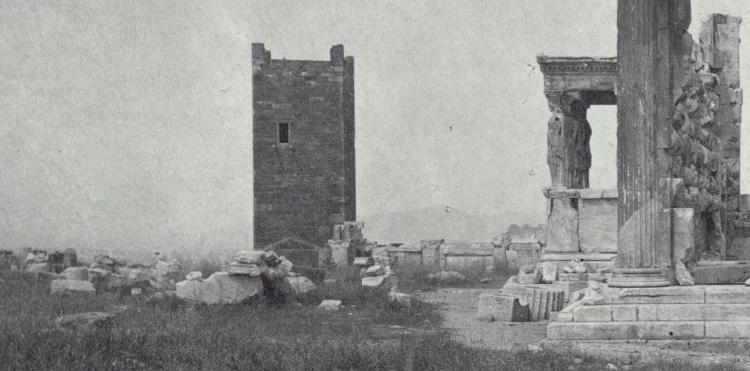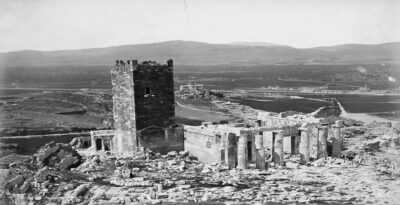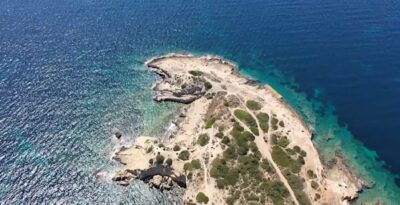We all have a very specific perception of the Acropolis and the Parthenon as to how they look for a long time However over the centuries it has undergone various changes that many of us do not know. For example, did you know that once in the Acropolis, there was a giant Tower 26 meters high, next to the Parthenon?
A Tower Unknown but with history
In rare photographic material that exists, we can see that among the ancient buildings there is a tall square tower, which was located opposite the temple of Athena Niki. But what’s this about? It was “property” of the Atsanioli who ruled the Duchy of Athens from 1388 until its fall from the Ottoman Empire in 1458. So this tower belonged to the famous Family of Florence, Atsanioli. Its name comes from the steel trade with which the family dealt. They reigned in the Duchy of Athens for 73 years. During their rule in Athens they turned Propylaea into a palace and the ancient entrance was sealed. So if someone wanted to climb the Acropolis hill they had to go through a winding road that ended up at the back of today’s entrance.
A Catholic church was built inside the palace. The Tower was located to the right of Propylaea and was twenty-six meters high. An internal wooden staircase led to the highest point, from where it had panoramic view of the attica basin. This particular tower was identical to the towers of Venice. As for its construction, it was built with marble from the Mountain of Penteli and marbles from the monuments of the Acropolis. Next to it there was a smaller serrated turret and above Propylaea there were the commander’s apartments. Scholar Peter Locke said there was a possibility that the building was built by the mighty De La Ross dynasty, which came from Burgundy and commanded the Duchy of Athens before the Atsanioli.

After the Ottoman prevalence, the Atsanioli left Athens. At that time the Tower was converted into a salt warehouse and was called Goulas or Koulas by the Turkish word ‘kule’ which means “tower”. In the Greek revolution it was turned into a prison. Even Ulysses Androutsos was imprisoned there. From his political opponents, not from the Turks.
The demolition of the Tower in the Acropolis
After the establishment of the modern Greek state it was decided that the post-classical buildings that were located in the Holy Rock be demolished. At that time the current of neoclassicism prevailed and anything that had nothing to do with Ancient Greece was deemed unnecessary. In 1874 Henry Sleman, the German archaeologist who excavated Troy, financed the demolition of the tower and since then the Propylaea have taken its present form. An action that was at times strongly criticised for removing a monument from the archaeological site.
External photography source: commons.wikimedia



